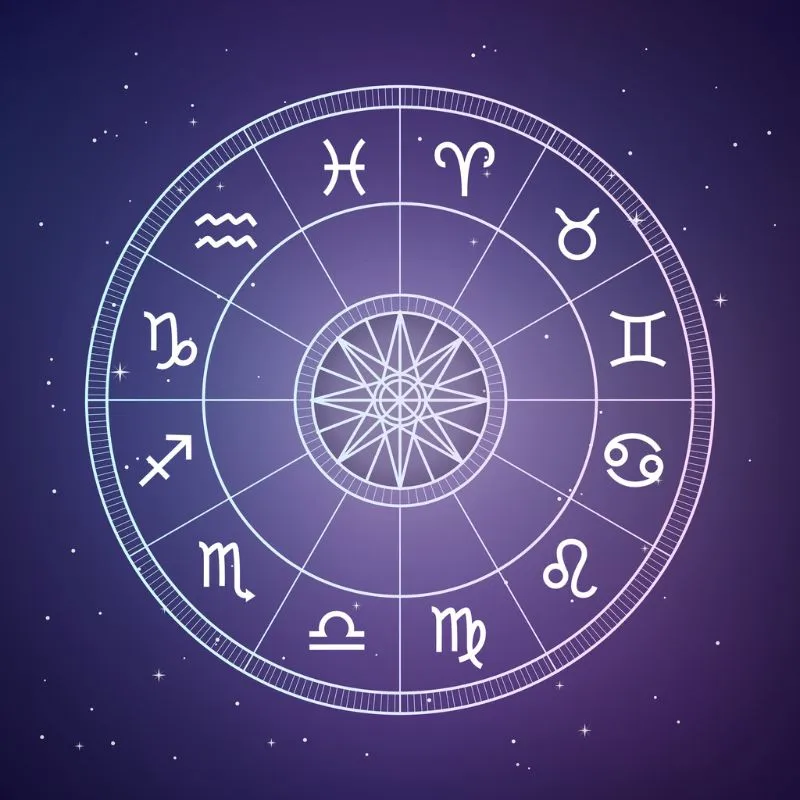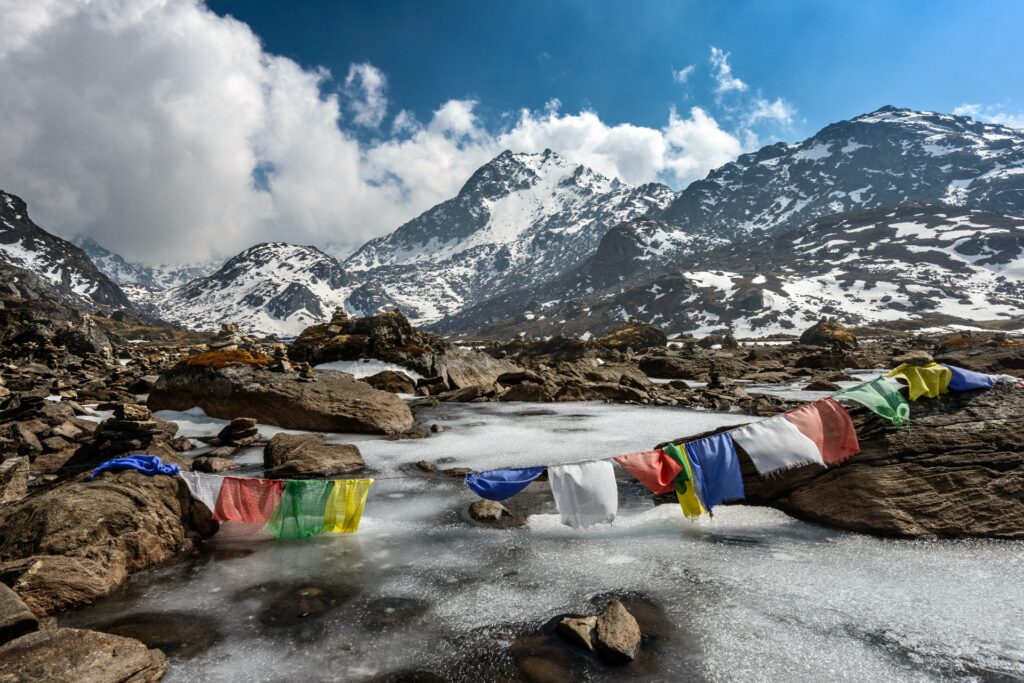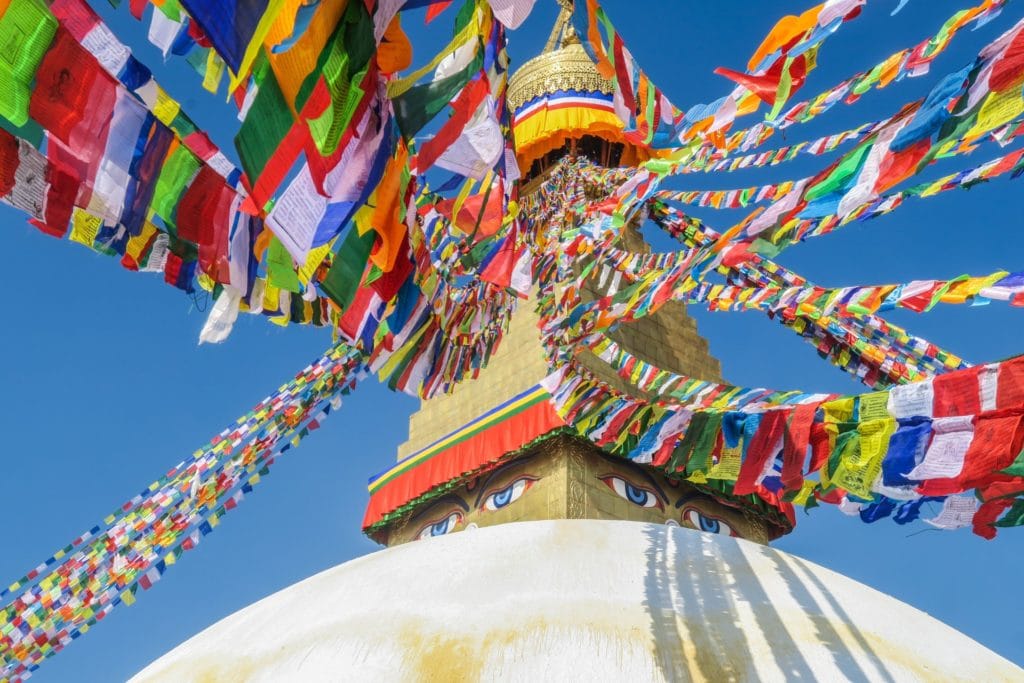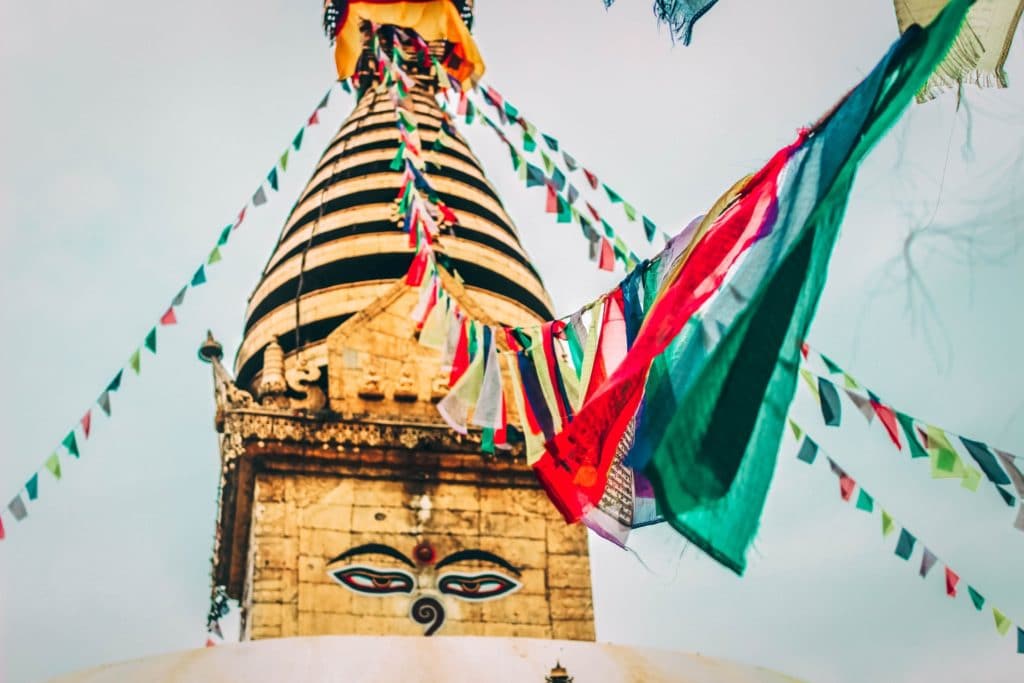
Knowing your Zodiac sign in Nepali may be the last thing in your mind. Heck, by this point, you now know your Western, Jyotish, and Chinese astrological readings!
But there is a certain charm to this astrological tradition. Not to mention, there is a sense of mystery around it.
While it is (more or less) confined within Nepal’s highlands, Nepali Astrology is slowly gaining foreigners’ attention.
Unfortunately, there are only too few internet resources about this beautiful tradition. But what we do know about it is enough to make us book a flight to its homeland!
Read on if you want to discover your Nepalese Zodiac Sign!
Where does Nepali Astrology come from?
While its name says where Nepali Astrology comes from, its roots come from a wholly different place.
Partly because of its location and cultural ties in South Asia, Nepali Astrology is very similar to Vedic Astrology.
This fact must not come as a surprise since the foundations of Nepali Astrology is the Vedas. As mentioned in the article on Vedic Astrology the Vedas are among the holiest texts for Hindus.
Why haven’t you heard of Nepal and Astrology before?

Nepali Astrology isn’t as famous as its neighbor’s, partly because not many foreigners have been to its mountainous home country.
Finding internet resources about this astrological tradition can also be challenging. Many websites about Nepali Astrology are in the Nepali script.
But a large factor for this is the fact that it is the Vedic Astrology’s younger sibling. Because of this, many expert astrologers on Nepali Astrology are also masters of the Vedic tradition.
Cultural Relevance of the Zodiac Sign in Nepali Rituals
In Nepal, the zodiac sign in Nepali is more than just a personality guide. It plays a crucial role in everyday customs and religious traditions.
These signs influence when people marry, name their children, and even celebrate festivals. Each Raashi holds power over sacred timing and social expectations.
Festivals in Nepal often align with astrological transitions. Specific zodiac signs in Nepali calendars mark when to begin rituals or end fasts.
Auspicious moments like Dashain and Tihar may be timed according to planetary shifts through Raashis. Some communities avoid certain rituals if a person’s zodiac sign is inauspicious at that moment.
During marriage planning, compatibility between the bride and groom’s Raashi is analyzed. If their signs are aligned harmoniously, the union is considered blessed.
Priests also review both charts to identify any unfavorable pairings. In this way, zodiac-based pairing becomes essential to marital harmony.
Naming ceremonies are guided by the moon’s position in a newborn’s Raashi. A priest suggests specific syllables that bring luck and strength to the baby.
Similarly, temple rites rely heavily on one’s astrological makeup. Before performing major pujas, priests ask for the devotee’s birth chart and Raashi to ensure accurate ritual alignment.
How is Nepali Astrology different?

If you’ve explored astrology before, you might be familiar with the zodiac signs used in Western or Vedic systems.
But Nepali astrology brings a unique perspective rooted in its culture, geography, and spiritual practices.
At first glance, it shares similarities with Vedic Astrology—yet when you look closer, you’ll find elements that are entirely its own.
One of the most significant differences lies in how time and planetary positions are calculated. Unlike Vedic astrology, which uses the sidereal zodiac and emphasizes lunar constellations (Nakshatra), Nepali astrology places the sun at the center.
The Nepali calendar, known as Bikram Sambat, is a solar calendar, meaning it aligns its calculations and festivals with the sun’s movement through the twelve zodiac signs.
This approach gives the zodiac sign in Nepali a rhythm that mirrors the seasonal flow of the Himalayas themselves.
Another distinction is the way astrology is lived out in everyday life. In the West, astrology is often consulted for personality insights or entertainment. In Nepal, it plays an essential role in shaping major life events.
From naming a newborn to choosing the right day for marriage or harvesting crops, astrology isn’t just symbolic—it’s a guiding principle.
Cheena (birth charts) are drawn by astrologers as soon as a child is born, becoming a lifelong reference for decisions big and small.
Cultural expression also makes Nepali astrology stand apart. The names of the zodiac signs are rendered in both the Devanagari script and Romanized Nepali, reflecting a bilingual spiritual identity.
While the symbolism may resemble its Vedic counterpart, each Raashi in Nepali culture carries folk interpretations, oral traditions, and festival customs that are distinctly local.
Perhaps what truly sets Nepali astrology apart is its heart. It’s not just a system of prediction—it’s a bridge between the personal and the cosmic.
Whether you’re lighting a lamp at a temple or looking up at the stars from a Kathmandu rooftop, this tradition invites you to see your life as part of something beautifully interconnected.
How The Zodiac Sign in Nepali Helps You Discover Yourself
#1: You learn timeless truths in a rapid world
Have you ever felt like modern life moves too fast for you to keep up? Maybe you’ve turned to apps, personality tests, or meditation just to feel grounded again.
But what if the answers you’re looking for were already written in the stars—specifically, your zodiac sign in Nepali?
This isn’t about vague horoscopes. It’s about understanding who you are at your core through ancient Raashi wisdom.
Each Nepali zodiac sign reflects not only your traits, but also your role in the grand design of nature and spirit.
In a world flooded with shallow noise, reconnecting with your Raashi can feel like remembering something your soul already knew.
#2: You obtain wisdom from other cultures
Across Nepal and among the diaspora, young people are dusting off old traditions and discovering something powerful.
You might be surprised how many are learning to read Cheena charts or asking grandparents about their Raashi. It’s not just cultural pride—it’s personal awakening.
If you’ve ever wondered where you come from or how your roots shape you, your zodiac sign might be the key. The zodiac sign in Nepali is more than a label; it’s a link to language, myth, ritual, and family.
In learning your Raashi, you aren’t just finding out more about yourself—you’re stepping back into a story that’s always included you.
#3: You can merge your own spirituality with Raashi teachings
Spirituality today looks different for everyone. You might practice mindfulness, explore astrology apps, or light incense before journaling.
What’s beautiful is how Nepali Astrology fits right into that path—not as something separate, but as something timeless you can make your own.
Each Raashi isn’t just a sign—it’s a way to align your energy with the cycles of the sun, seasons, and spirit.
Knowing your sign helps you understand your instincts, make conscious choices, and feel guided. This is where tradition becomes transformation—where the stars above reflect the journey within.
Translating Between Nepali and English: Zodiac Signs Made Easy
Learning what your zodiac sign means in Nepali becomes more rewarding when you can recognize it across languages. Whether you’re a Nepali speaker or someone curious about local traditions, having a clear translation helps.
This section bridges the gap between traditional and modern understanding. Below is a helpful table translating your Raashi for clarity. It contains crucial information on what are the 12 signs of Nepali zodiac as well as their English counterparts.
| Nepali Raashi Name | English Zodiac Sign | Devanagari Spelling |
| Mesh | Aries | मेष |
| Brish | Taurus | वृष |
| Mithun | Gemini | मिथुन |
| Karkat | Cancer | कर्कट |
| Simha | Leo | सिंह |
| Kanya | Virgo | कन्या |
| Tula | Libra | तुला |
| Brishchik | Scorpio | वृश्चिक |
| Dhanu | Sagittarius | धनु |
| Makar | Capricorn | मकर |
| Kumbha | Aquarius | कुम्भ |
| Meen | Pisces | मीन |
This simple chart allows you to compare your sign between systems. Having both names and Devanagari spellings helps reinforce recognition.
Many resources only list either the Romanized or Devanagari versions. By showing all three, you get a complete view of the signs across traditions.
One barrier people often face is the language itself. The script used in Nepali Astrology may feel inaccessible to those unfamiliar with Devanagari.
This can discourage readers—even those deeply interested in astrology—from diving deeper into local traditions. By presenting the names side by side, Nepali astrology will be that much easier to appreciate.
Understanding the nepali to english zodiac sign connection isn’t just about translation. It’s about grasping the personality and spiritual energy behind each Raashi.
These connections offer more insight into your identity. You gain access to interpretations found only in Nepali texts and rituals.
In a globally connected world, knowing both sides of your astrological identity matters. It builds a richer picture of who you are.
It also makes it easier to connect with others who follow different traditions. This simple act of translation opens doors into centuries of spiritual wisdom.
Okay, so what is your zodiac sign in nepali?

As mentioned, the Zodiacs are an essential part of Nepali Astrology. The entire mix is known to the Nepalese as Raashi and often equated with their English counterparts.
Here’s a quick rundown of all 12 of them:
1. Mesh (Aries)
People born under Mesh are born warriors. They are unafraid of any challenges that may come on their way and are known as capable leaders.
2. Brish (Taurus)
Those born under the sign of Brish are responsible and reliable. A sense of dignity and stability is what keeps them grounded in what they believe in.
3. Mithun (Gemini)
Mithun-born individuals are highly sociable and well-liked. For them, the world is one big playground, and their curious, playful nature is set on learning all about it.
4. Karkat (Cancer)
The people born under Karkat have a reputation as the “caretakers” of the Zodiac. They highly value safety and comfort and find security with those they love.
5. Simha (Leo)
Simhas have a distinct dignified aura. Like the Himalayas’ ferocious yet lithe snow lions, they are proud, charismatic, and a pleasure to behold.
6. Kanya (Virgo)
The people who are born under Kanya are often labeled as meek and humble. They have a solid sense of duty and are also responsible and intuitive.
7. Tula (Libra)
Those born under Tula are natural judges. They have a finely-tuned sense of morality and commit themselves to noble goals for the benefit of mankind.
8. Brishchik (Scorpio)
Brishchik-borns have a reputation for being mysterious and unfeeling. But beyond their facade is a deeply passionate and intense character that is often hard to describe.
9. Dhanu (Sagittarius)
The individuals born under Dhanu are wild and independent. Their “wild child” character is also reinforced by a thirst for knowledge and experiences.
10. Makar (Capricorn)
Makars are serious, brooding, and engrossed in their responsibilities. Yet they are also confident, goal-driven, and ambitious.
11. Kumbha (Aquarius)
The people born under Kumbha are weird- in a good way. They are inventive and innovative and put the well-being of others on the top of their priorities.
12. Meen (Pisces)
People born under Meen have their heads in the clouds- literally (Nepal is home to Mount Everest after all) and figuratively! They are dreamers and creators, preferring to let life take them where they need to be.
Like most astrological traditions, a birth chart is vital to Nepali Astrology. This birth chart is the Cheena (this word also translates to horoscope).
It is a tradition for parents to call in an astrologer as soon as a baby is born. This way, the family is aware of how they can help the child become their very best.
How to Know Your Zodiac Sign in Nepali: A Step-by-Step Guide
Knowing the answer to what is my zodiac sign in Nepali can feel unfamiliar at first, but it’s surprisingly simple when broken into steps. This guide will help you align your birthdate with the Nepali calendar and find your Raashi. Here is how to know your zodiac sign in Nepali through a clear, traditional process. Follow each step to discover your astrological identity in this cultural system.
Step 1: Convert your birthdate into Bikram Sambat
The Nepali zodiac system uses the Bikram Sambat calendar. Start by finding the equivalent of your Gregorian birthdate in this system.
Write down your Bikram Sambat date accurately and compare it with your Gregorian calendar equivalent through a converter. This will help you find your sign.
Step 2: Check the solar position for that day
Once your Bikram Sambat date is ready, determine the solar position on that day. This helps you find the Raashi or sign ruling the sky. Traditional Panchangs list each sign’s date ranges in detail. Be careful as dates may shift slightly each year.
Step 3: Identify your Raashi from a Nepali Panchang
Use a Panchang or an astrology website to match your date to a Raashi. Each Raashi spans around a month and corresponds to a solar transit. Match your date range carefully with the Raashi listed. This gives you your Nepali zodiac sign based on tradition.
Step 4: Consult an astrologer if needed
If you feel unsure, visit a Nepali astrologer or temple priest. These experts interpret the Panchang and the Cheena for deeper accuracy. Many families consult astrologers for naming, marriage, and festivals. Their insights add cultural depth to your Raashi discovery.
Step 5: Refer to your Cheena if available
Your Cheena or birth chart is often created during infancy. It includes your Raashi along with planetary alignments. If your family has one, ask to see it. This traditional chart is the most trusted way to confirm your zodiac sign as it is in Nepali.
By following these five steps, anyone can discover their Raashi easily. The process honors both tradition and accuracy.
With your zodiac sign known, you can explore your traits and rituals more deeply. This will help you learn about yourself more deeply and unleash the benefits of Nepali astrology in your daily life.
Using Nepali Astrology in Your Daily Life
Once you’ve discovered your zodiac sign in Nepali, you might wonder how this knowledge fits into everyday living. The good news? Nepali astrology isn’t just for big events like weddings or festivals—it’s deeply practical and personal.
Start your day by checking the Raashi-related calendar. Often, you’ll find information for travel, business deals, or even haircuts. By aligning your actions with your Raashi’s daily influences, you ground your choices in centuries-old wisdom.
At home, your Raashi can guide how you interact with others. Understanding the emotional or elemental traits linked to your sign helps improve communication and reduce conflict.
For example, if your Raashi is fiery like Mesh (Aries), knowing this might help you stay patient in tense moments.
Finally, consider incorporating small rituals based on your sign. Wearing colors or gemstones linked to your Raashi, lighting incense on your sign’s favorable days, or meditating on your ruling planet are all subtle yet powerful ways to stay attuned.
These habits aren’t about superstition—they’re reminders that your life is part of a bigger cosmic design.
In a fast-paced world, practicing Nepali astrology daily offers grounding and clarity. It keeps tradition alive while nurturing personal awareness.
Whether you’re exploring Raashi-based self-care or honoring family rituals, you’re engaging with a cultural heritage rich in meaning.
Ultimately, this journey through the Nepali zodiac reveals more than signs—it reveals a spiritual framework woven into everyday life.
As you begin applying what you’ve learned, remember: your birth sign is more than a label. It’s a doorway to self-discovery, ancestral wisdom, and a deeper understanding of your place in the cosmos.
Frequently Asked Questions (FAQ)
Rashi (राशि) refers to the zodiac sign in Nepali astrology. It is determined based on your birthdate according to the Bikram Sambat calendar and the sun’s position at that time.
To find your Rashi:
Convert your Gregorian birthdate into the Bikram Sambat (Nepali) date.
Check the sun’s position for that BS date using a Nepali Panchang.
Match it with the Rashi date ranges to know your zodiac sign.
No, although Nepali astrology is influenced by Vedic astrology, it has its own distinct calendar (Bikram Sambat) and cultural practices. For example, it is more solar-based, while Vedic astrology emphasizes the lunar constellations.




